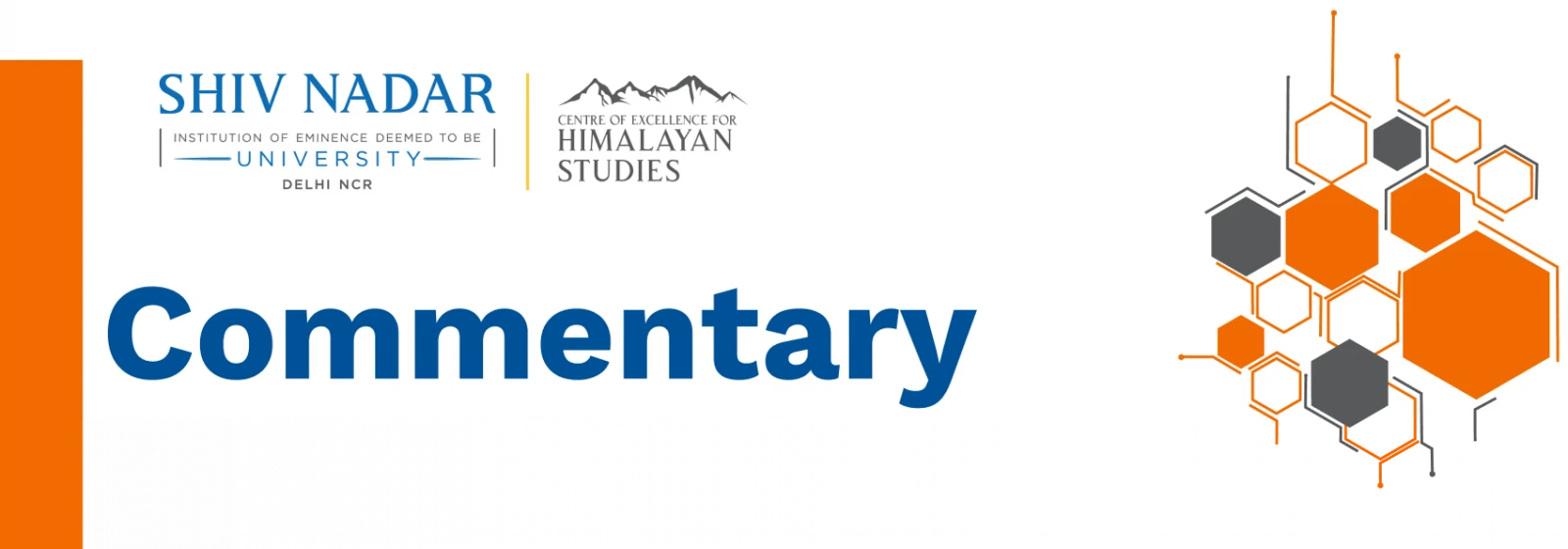
17 July 2023
China’s Flawed Negotiation Template: Implications for India
China’s President Xi Jinping chose to attend the virtual SCO Summit chaired by India on July 4, 2023. The faint hope that the India-China relationship may see a thaw at the SCO Summit was bellied. Before the Galwan clashes in June 2020, there were occasions where multilateral meetings provided chances for leadership-level interaction.
Meanwhile, June 15 marked the completion of three years of border tensions in Ladakh between India and China. Although both sides have managed to contain the tensions from escalating into a large-scale conflict through diplomatic and military level talks, their relationship stands frozen. While the bilateral trade relations, specifically imports from China, continue to thrive, there are no visible signs of talks at the highest political level to reduce tensions on the border.
Meanwhile, the barriers to communication are hardening, which is evident with both sides refusing to extend journalist visas. China’s Foreign Minister Qin Gang in early March and Defense Minister Li Shangfu in April visited India to attend SCO events. Unfortunately, these visits did not lead to any significant progress in improving the bilateral relationship.
The recent standoff between the two armies, after the bloody Galwan clashes, has generated severe strain in the India-China bilateral relationship. This is the most prolonged border standoff between the two countries since they normalised their relationship in 1988 after almost a decade-long talks.
The standoff is characterised by large-scale military deployments and frenetic construction activities on the border. Both countries have reiterated their commitment to resolve the border tensions through talks. There has been repeated emphasis that agreements on border management, signed since the 1990s, should be respected. However, the approaches of India and China to get the relationship back on track are fundamentally different.
India has consistently insisted that tensions on the border impinge upon the other aspects of their relationship. However, India’s attempt to constrain economic interactions with China has met with challenges. For instance, bilateral trade continues to grow with a rapidly rising trade deficit favouring China.
On the other hand, China has emphasised that the border situation remains stable and insists on normalising relations while continuing negotiations on the border issues. The challenges confronting the relationship are diverse and cannot be reduced to one variable. And yet it is puzzling that China has yet to take an initiative to break the deadlock at the highest political level, assuming that this remains the only option left. The fact that past standoffs were resolved relatively more quickly makes solving the puzzle more pertinent.
Perhaps we can glean an answer to this puzzle by examining China’s recent approach to negotiating with the US. The US and China are locked in a technological rivalry and trade war. Further, tensions persist between these two nations in East and Southeast Asia. Joe Biden and Xi Jinping did meet at the G20 Bali Summit in November 2022. However, after the “spy balloon controversy”, China has shown surprising defiance and rebuffed US overtures to re-establish top-level military-to-military channels of communication and demanded that the US reverse its positions towards China.
Top US officials such as Foreign Secretary Anthony Blinken and Treasury Secretary Janet Yellen travelled to Beijing in June and July, respectively. It appears that the US is changing track from decoupling to de-risking. In China’s perspective, the US willingness to keep channels at top level open seems to suggest that its negotiation approach has worked reasonably well. The US has reiterated that the bilateral economic ties remain important, although the military tensions between them remain potent.
A lesson from China’s recent policy stance towards the US offers insights into its thinking towards India. China seems to be deploying a similar template with India, viz., continuing with economic relations while locked into a military and regional geopolitical rivalry. Deploying such a template is a significant roadblock, as Beijing is reluctant to initiate talks with Delhi. Instead, China insists on normalised economic relations while tensions on the border remain active.
However, there are limitations to deploying the China-US negotiation template to China-India relations. A fundamental difference is that the US and China have deeply integrated economic relations, so the above negotiation approach has worked. Moreover, their military tensions are about the struggle for global and regional supremacy rather than a direct territorial conflict between the two countries. On the other hand, India and China are locked in a direct border dispute. In short, all roads to a normalised India-China relationship go through a peaceful border, and the Chinese strategic community is intentionally downplaying this factor.
Many in China’s strategic community are surprised about India’s alleged “rigidity” in talks. Other than economic ties, the India-China bilateral interactions are getting increasingly constrained. However, the policymakers in Beijing are confident about China’s rising power which, as per their calculation, will lead India to accept its terms. This is evident from China’s sustained insistence that the border tensions and other aspects of the relationship should be disentangled.
However, the Beijing approach goes against the logic behind India-China talks from the 1980s onwards, which ensured a relatively peaceful border until the early years of the previous decade. The logic was that a peaceful border was the central aspect of their normal relationship. It appears that Beijing failed to consider the lessons from past negotiations and peace agreements related to the border. Further, China’s overestimation that the framework it is applying towards the US will compel India to negotiate remains a fundamental problem in initiating talks at the highest level.
Originally published in Politeia Research Foundation on 15 July 2023
About the Author: Devendra Kumar is an Associate Fellow, at the Centre of Excellence for Himalayan Studies, Shiv Nadar Institution of Eminence, Delhi National Capital Region.
Share this on: